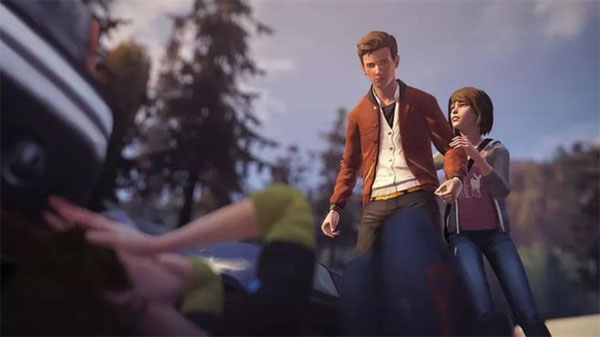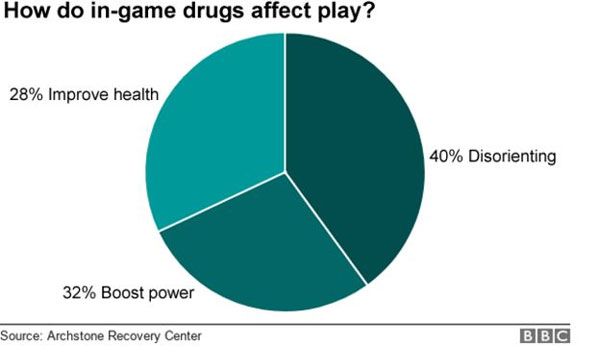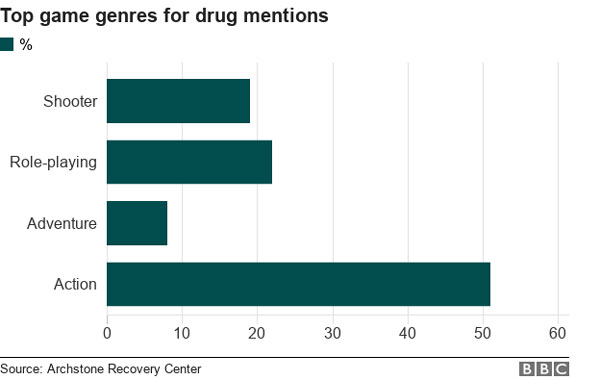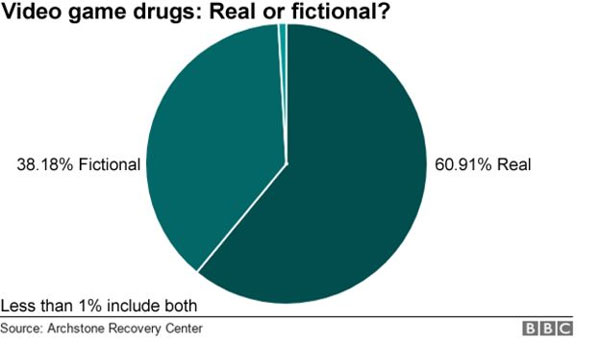[ad_1]
A study of real and made-up drugs in best-selling video games has highlighted how harmful narcotics often give unlikely strength and health boosts to characters.
 |
|
Life Is Strange, which was released in 2015, featured heroin and cannabis — Photo: SQUARE ENIX
|
The report also details how players are often prompted to create drug cocktailsto gain new or enhanced abilities.
The work was done by Archstone, an addiction awareness organisation.
It said parents needed to be cautious about what their children are playing and learning.
The Entertainment Software Rating Board (ESRB), which assigns age and content ratings to games in the US, says it is happy with its drugs-related guidance.
 |
“The ESRB’s robust rating submission process ensures accurate, detailed and reliable rating information that parents are aware of, regularly use and trust to help decide which games and apps are appropriate for their children and family,” said a spokeswoman.
Ever since Mario powered himself up with mushrooms, allusions to drug use have become commonplace, but as games – and the people who play them – have matured, so has the depiction of mind- and body-altering substances.
“Whether portrayed with gritty realism or eye-rolling cheesiness, it appears drugs in video games are here to stay,” Archstone’s report concedes.
The organisation runs a drugs recovery centre-based in Palm Beach, Florida.
 |
Its leader, Logan Freedman, took the top-100-selling games on each console and examined those featuring drug use, whether substances found in the real world, such as opioids, or fictional drugs, like Grand Theft Auto’s Spank.
It found that in the games that featured drug use, the majority – 61% – used real-world names. And in several cases, the fictional drugs were obvious replicas of real drugs.
One example is Skooma – a drug found in Skyrim, an action game released in 2011.
“It’s a crystal. You smoke it out of a glass pipe and you have withdrawal afterwards,” Mr Freedman explained, noting the obvious similarities to crack cocaine.
As in film, drug use in games could be seen as an understandable desire on the part of games developers to produce realistic experiences.
But the effects of those drugs are often less true to life.
In 32% of cases observed by the research team, drugs acted as a “power-up” of some kind, while 28% boosted a character’s health.
Multiple stimulants
In other examples, players were often able to combine drugs to produce beneficial effects.
The report notes: “The most common combination of drugs? Multiple stimulants. Nearly one-quarter of the games we looked at included more than one stimulant.
“Used to stay awake, gain energy, and get high, stimulants are extremely addictive.
“Common examples include cocaine, crack cocaine, and meth.”
 |
That said, Mr Freedman stressed that several games, such as the Fallout series, do demonstrate the adverse effects of drugs as their storylines move forward.
Rating system
The ESRB told the BBC it took time to consider the context of taking substances when determining the guidance it gives parents buying games for their children.
“The ESRB rating system weighs factors that are unique to an interactive medium, such as the reward system, frequency, and the degree of player control among others,” it said.
“Therefore, the mere presence of something like a health pack in a game may not result in a restrictive rating being assigned.
“However, given the context in which drugs appear in a game, the ESRB may assign a restrictive age rating, along with either the drug reference or use-of-drugs content descriptor.”
The report’s authors are not calling for the games to be modified in any way.
“It comes down more to parents and what their kids play,” Mr Freedman concluded.
“They’re made for adults. It says [so] directly on the box.”
Source: BBC
[ad_2]
Source link
